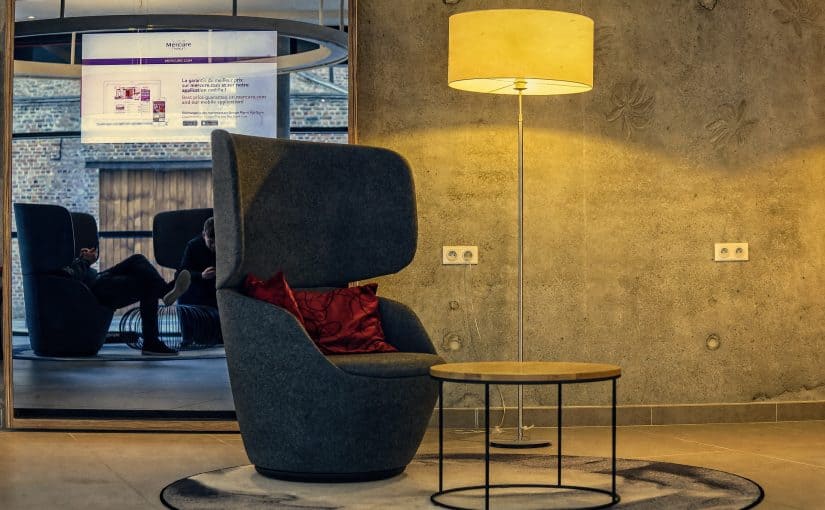If you’re thinking about purchasing a waiting chair for your office, you may be wondering if it’s really worth the investment. In this blog post, we’ll discuss some of the benefits of having a waiting chair in your office and help you decide if it’s the right purchase for you.
When it comes to office seating, there are a lot of options to choose from. But should you get a waiting chair for your office?
Some factors to consider include how many people will be using the waiting area and how much space you have available.
It can be tough to find the right furniture to make sure you’re productive and comfortable. One piece of furniture that’s often overlooked is a waiting chair. A waiting chair can provide comfort and some extra storage space for your office. Here are a few reasons why you might want to consider purchasing a waiting chair for your home office. Having a designated spot for visitors to wait can make their experience much more pleasant and can help to keep your work area organized.
Consider the following benefits of having a waiting chair in your office:
1) It shows that you care about your customers and want them to be comfortable while they wait.
2) The receptionist’s chair might be the most important sales tool you have. The proper seating arrangement at the beginning is essential to making the whole visit memorable and getting it right. Every visitor that walks through the door or waits in the reception area is both the first and last point of contact with your firm. The way that each person dealing with your company perceives you will influence how well they work together to serve your clients. The first impression of the firm is created by the receptionist. Invariably, it is how they are treated at this point which forms their initial impressions of your company.
3) It shows that you are confident in regards to your business and services because…
There’s never a good time for an unexpected guest to drop in for a chat. However, if you have one or two seats available for visitors then it lessens the potential disruption caused by these unscheduled visits.
4) It can help to keep your office organized and tidy by providing an extra place for people to sit.
5) It can make your office look more professional and polished.
6) It can be used as an extra seat during meetings or presentations.
7) …and last but not least important – it saves money!
Even if your office has no other chairs than those in front of each worker’s desk, there should be at least one seat reserved exclusively for unannounced guests who need somewhere to wait.
This way, you avoid them wandering around your office and possibly getting in the way of those who are working or those that don’t have a seat available.
In addition to this, I’ll give you another reason – it’s healthier!
Would it not be better for customers and potential clients to wait in a comfortable environment rather than on a hard chair in a hallway? You can even offer them some refreshments while they wait which will enhance your image as an attentive company.
Choosing the Right Waiting Chair:
The first step when purchasing a new waiting chair is determining which type of office furniture best compliments your current décor and style preferences.
1) Leather: Provides a formal and traditional look that is bold, rich and strong.
2) Fabric: Adds a touch of elegance through sleek design or vibrant prints.
4) Wooden Arms: Provides additional support for the arms as well as a sturdy frame.
5) Carpet Glides: Prevents scratches from occurring on hard floors by providing stability to the chair’s feet during use.
6) Size & Dimensions – In order to accommodate all visitors comfortably, waiting chairs should measure approximately 26 inches in width with 22 inches of depth (the distance between the seat cushion and back rest). This allows enough space for visitors to get up-and-down easily while seated. The seat should measure 16 inches in width (standard size).
7) Arms: Provide additional support for the arms as well as a sturdy frame. There are 3 main types of arm options to choose from including fixed, removable and adjustable. When determining which style is best for your space, keep in mind that fixed arms can obstruct chairs placed directly behind it so choose an option with removable or adjustable arms if this may be an issue. Fixed arms tend to be heavy and bulky while removable/adjustable models offer flexibility within the layout of any office environment.
8) Soft Cushions: For added comfort during extended periods of sitting, look for seats with soft cushioning that allows the body to rest against the chair’s back and seat.
9) Height Adjustability: Look for adjustable chairs that adjust to your preferred height and provide a comfortable position when seated with feet flat on the floor.
10) Air Seating: A style of chair in which a cushion is supported by compressed air rather than foam or webbing.
11) Leather Upholstery: Leather is a popular upholstery choice because it looks great and wears well over time, although it does require some maintenance.
12) Polyurethane Foam Cushioning: This type of foam comes in various levels of firmness depending on preference and application requirements. In general, higher densities equal more comfort while lower density will give you greater flexibility in the chair itself since they are less firm.
13) Foam Back Cushion: Foam back cushions are usually stuffed with a higher density foam to maintain the shape of the cushion while supporting your lower back, pelvis and hips.
If you’re on the fence about whether or not to get a waiting chair for your office, hopefully this article has helped to ease some of your concerns and has provided you with the knowledge you need in order to make a decision.

